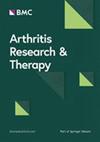洞察检测AMPA交叉反应性:比较环肽和蛋白质为基础的分析
IF 4.6
2区 医学
Q1 Medicine
引用次数: 0
摘要
针对携带不同翻译后修饰(PTMs)抗原的自身抗体,包括瓜氨酸化、氨甲酰化和乙酰化残基,是类风湿关节炎(RA)的特征。这些抗修饰蛋白抗体(AMPAs)通常使用酶联免疫吸附试验(elisa)检测,肽或蛋白抗原携带这些修饰。AMPAs对多种ptm表现出显著的交叉反应性,疾病发病前交叉反应性的增加可能作为疾病进展的生物标志物。然而,抗原主干变异对交叉反应性检测的影响尚不清楚。因此,我们研究了ptm -骨干变异对ampa反应性检测的影响。采用改良胎牛血清(FCS)和环肽(CXP2)为基础的elisa检测来自早期关节炎诊所(EAC)的608例RA患者的血清AMPA反应性。为了研究交叉反应模式,我们使用修饰的FCS或多肽从血清中分离AMPAs,并评估分离的抗体对三种不同PTMs的反应性。基于cxp2的检测结果显示,对多种PTM残留物具有血清反应性的患者比例更高,而基于fc的检测结果显示出更有限的血清学特征。当比较瓜氨酸化和氨基甲酰化骨架的反应时,61.2%的样品对CXP2上的两种pmt残留物都有反应,而在FCS上,这一比例显著下降到54.0%。抗原主链也影响AMPA的分离,因为与修饰肽捕获的AMPA相比,修饰的FCS捕获的AMPA具有更有限的、更少的交叉反应性表位识别谱。抗原骨干对AMPA交叉反应性检测的影响。更好地了解PTM主干如何影响这种检测,可以深入了解AMPA反应性的结构基础,并通过强调分析选择如何影响结果来改进数据解释。本文章由计算机程序翻译,如有差异,请以英文原文为准。
Insights into the detection of AMPA cross-reactivity: comparing cyclic peptide- to protein-based assays
Autoantibodies targeting antigens carrying distinct post-translational modifications (PTMs), including citrullinated, carbamylated, and acetylated residues, are characteristic for rheumatoid arthritis (RA). These anti-modified protein antibodies (AMPAs) are typically detected using enzyme-linked immunosorbent assays (ELISAs), with peptides or protein antigens carrying these modifications. AMPAs exhibit significant cross-reactivity towards multiple PTMs, and increased cross-reactivity before disease onset may serve as a biomarker of disease progression. However, the impact of antigen backbone variations on cross-reactivity detection remains unclear. Therefore, we investigated how PTM-backbone variations affect AMPA-reactivity detection. Sera of 608 RA patients from the Early Arthritis Clinic (EAC) were measured for AMPA reactivity using modified fetal calf serum (FCS)- and cyclic peptide (CXP2)-based ELISAs. To investigate cross-reactivity patterns, we isolated AMPAs from serum using either modified FCS or peptides and assessed the reactivity of the isolated antibodies towards three different PTMs. CXP2-based assays reveal a higher proportion of patients with serum reactivity against multiple PTM residues, while FCS-based assays exhibit a more restricted serological profile. When comparing responses to citrullinated versus carbamylated backbones, 61.2% of samples reacted to both PTM-residues on CXP2, while on FCS this percentage significantly decreased to 54.0%. The antigen backbone also influences AMPA isolation, as modified FCS captures AMPAs with a more restricted, less cross-reactive epitope recognition profile compared to those captured with modified peptides. Antigen backbones influence the detection of AMPA cross-reactivity. Gaining a better understanding of how PTM backbones affect this detection could provide insights into the structural basis of AMPA reactivity, and refine data interpretation by highlighting how assay choice influences results.
求助全文
通过发布文献求助,成功后即可免费获取论文全文。
去求助
来源期刊

Arthritis Research & Therapy
RHEUMATOLOGY-
CiteScore
8.60
自引率
2.00%
发文量
261
审稿时长
14 weeks
期刊介绍:
Established in 1999, Arthritis Research and Therapy is an international, open access, peer-reviewed journal, publishing original articles in the area of musculoskeletal research and therapy as well as, reviews, commentaries and reports. A major focus of the journal is on the immunologic processes leading to inflammation, damage and repair as they relate to autoimmune rheumatic and musculoskeletal conditions, and which inform the translation of this knowledge into advances in clinical care. Original basic, translational and clinical research is considered for publication along with results of early and late phase therapeutic trials, especially as they pertain to the underpinning science that informs clinical observations in interventional studies.
 求助内容:
求助内容: 应助结果提醒方式:
应助结果提醒方式:


